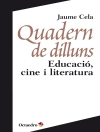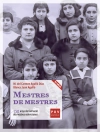Sugar Falls is a story of strength, family, and culture that shares the awe-inspiring resilience of Elder Betty Ross. Taken away to a residential school, Betsy is forced to endure abuse and indignity, but her father’s words give her the strength and determination to survive.
Written by Anishinaabe educator Christine M’Lot, the Teacher Guide for Sugar Falls: A Residential School Story offers a diverse menu of activities that support teachers in
- planning lessons throughout the reading process, including before, during, and after reading Sugar Falls
- creating dynamic learning experiences for their students while maintaining a respectful and dignified approach to Indigenous topics
- enhancing students’ prior knowledge about the topics addressed in the book
- using trauma-informed practices to prepare students for sensitive topics
- identifying cross-curricular connections and opportunities to collaborate with teachers in other subject areas
- infusing Indigenous pedagogical practices, such as working with others, seeking holism in understanding, and learning through storytelling
- engaging students’ understanding and encouraging them to embrace differing worldviews
- facilitating activities for individual students, small groups, whole-class instruction and discussion, or even the whole school
Sugar Falls: A Residential School Story includes sensitive topics (e.g., abuse, trauma); therefore, it is most appropriate for grades 9–12. The activities in this guide are suitable for courses such as English Language Arts, Social Studies, History, Global or Contemporary Issues, as well as Current Topics in First Nations, Métis, and Inuit Studies. They could be adapted for use at the university or college level.
Tabella dei contenuti
CONTENTS
USING THIS GUIDE
- What Is Trauma-Informed Practice?
- Teaching Difficult Topics From a Trauma-Informed Stance
- The History and Legacy of Residential Schools
- Teaching Graphic Novels
- Inviting an Elder Into Your Learning Space
PART 1: BEFORE READING SUGAR FALLS
Activities for the Classroom
- What Is Wellness From an Indigenous Perspective?
- Learn the History
- Analyze Children’s Art
- Research Ethics and Experiments on Children in Residential Schools
Whole-School Activities
- Learn About Indigenous Culture and History
PART 2: WHILE READING SUGAR FALLS
Engaging With the Text
- Read and Respond to the Foreword
- Read and Respond to the Flashback
- Read and Respond to the Final Section of the Book
- Read and Respond to the Afterword
Beyond the Text: Suggestions for Further Research
- Learn About Other Indigenous People’s Stories
PART 3: AFTER READING SUGAR FALLS
Engaging With the Text
- Respond to Sugar Falls With an Essay
Beyond the Text: Suggestions for Further Research
- Education for Change
- Learn About Creating Change Through Art
- Learn About Indigenous Cultures and Languages
- Culminating Project: Advocate for Change
PART 4: RESOURCES
- Resources for Students
- Resources for Teachers
Circa l’autore
Christine M’Lot is an Anishinaabe educator, curriculum developer, and consultant from Winnipeg, Manitoba. For over a decade, she has worked with children and youth in multiple capacities including teaching and facilitating programs through children’s disability services and child welfare. Christine co-edited the Indigenous-informed resource for educators Resurgence: Engaging With Indigenous Narratives and Cultural Expressions In and Beyond the Classroom, and recently completed her master’s degree in education with a focus on navigating digital spaces in Indigenous education.












